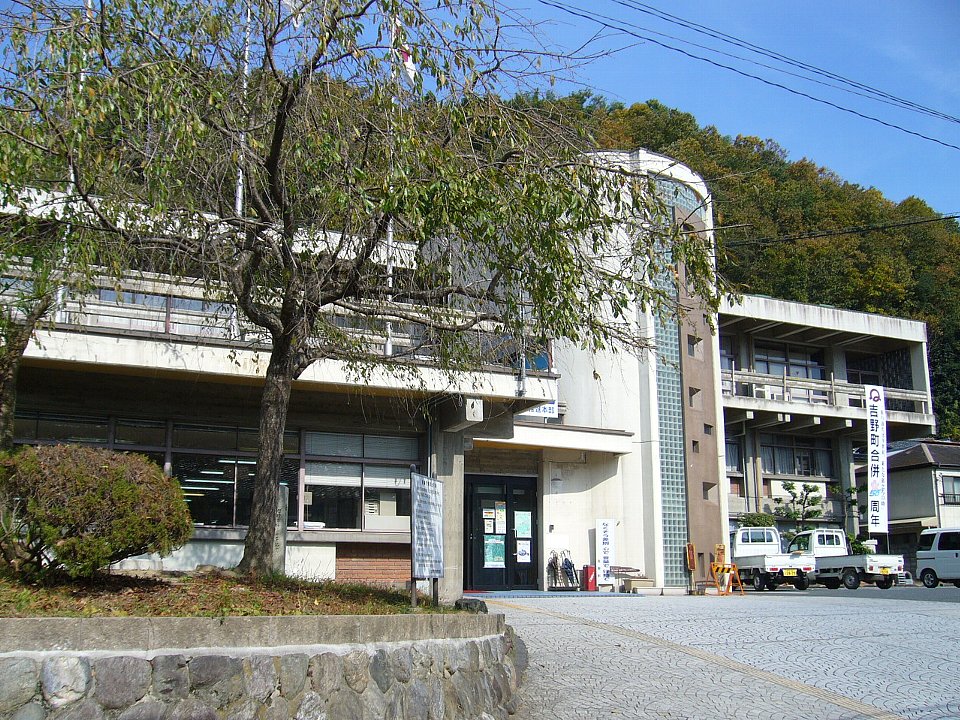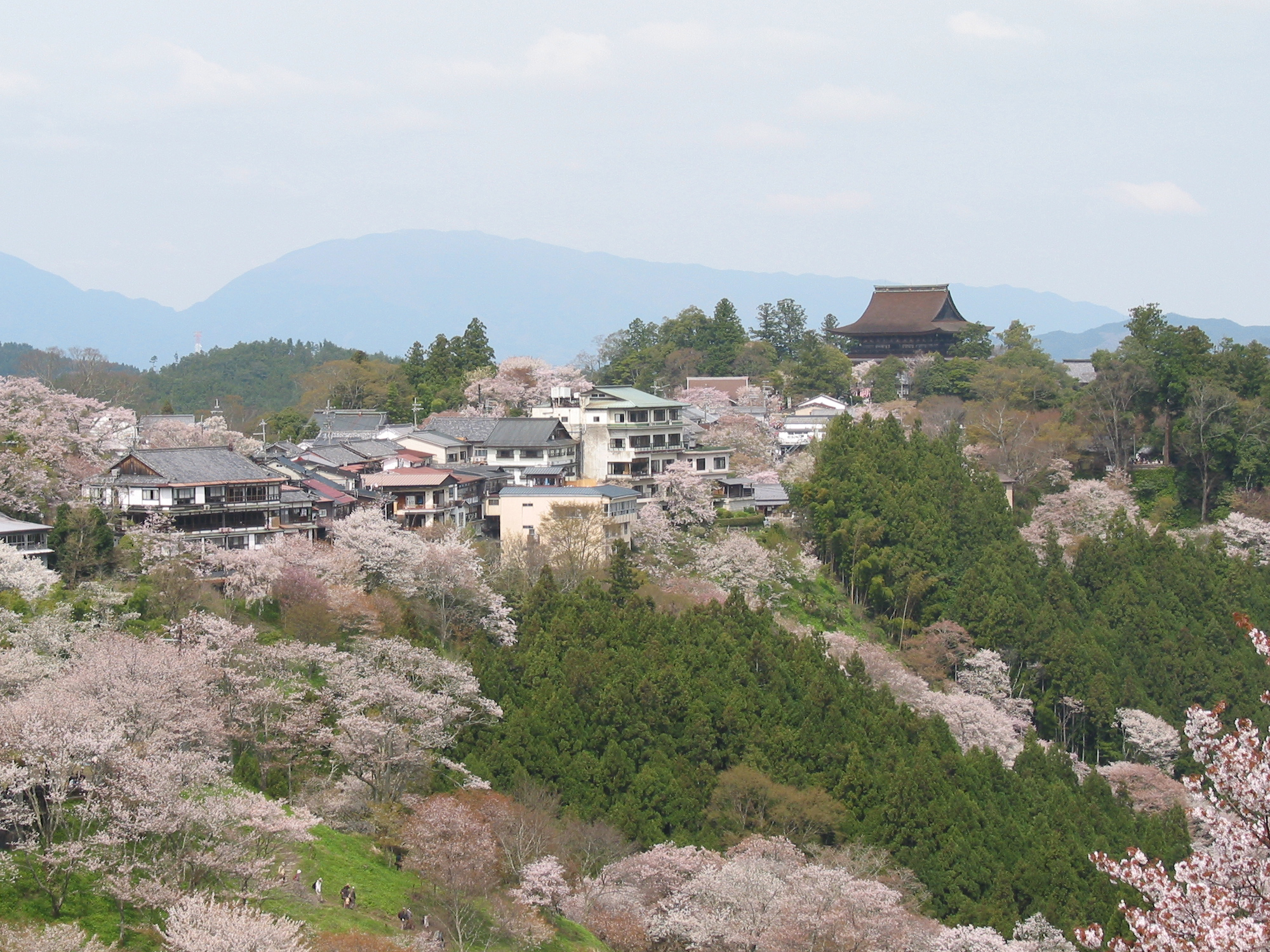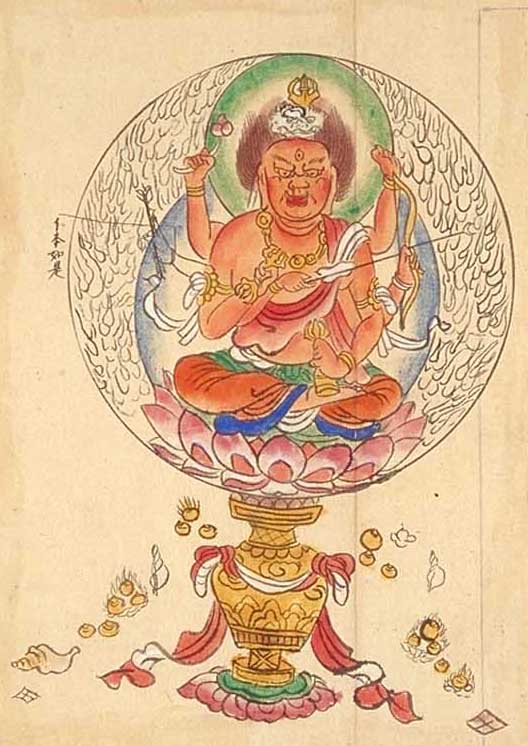|
Kinpusenji
is the head temple of a branch of the Shugendō religion called Kinpusen-Shugendō in Yoshino district, Nara Prefecture, Japan. According to tradition, it was founded by En no Gyōja, who propagated a form of mountain asceticism drawing from Shinto and Buddhist beliefs. Along with Ōminesan-ji Temple, it is considered the most important temple in Shugendō. The temple's main building, the "Zaō-Hall" (''Zaōdō'') dedicated to Zaō gongen (蔵王権現), is the second largest wooden structure in Japan after the Great Buddha Hall at Tōdai-ji in Nara. Kinpusen-ji is a junction in a series of stops on pilgrimage routes. A Shinto shrine dedicated to Inari Ōkami is attached to the main compound. In 1963, the Temple constructed a hall named Southern Court Mystic Law Hall (''Nanchō Myōhōden'') to appease the soul of the four emperors of the Southern Court and others who lost their lives in many battles since the "Northern and Southern Courts period" (Nanboku-chō period, 1336� ... [...More Info...] [...Related Items...] OR: [Wikipedia] [Google] [Baidu] |
List Of National Treasures Of Japan (temples)
The term " National Treasure" has been used in Japan to denote cultural properties since 1897. The definition and the criteria have changed since the inception of the term. The temple structures in this list were designated national treasures when the Law for the Protection of Cultural Properties was implemented on June 9, 1951. The items are selected by the Ministry of Education, Culture, Sports, Science and Technology based on their "especially high historical or artistic value". This list presents 158 entries of national treasure temple structures from the late 7th-century Classical Asuka period to the early modern 19th-century Edo period. The number of structures listed is more than 158, because in some cases groups of related structures are combined to form a single entry. The structures include main halls such as '' kon-dō'', ''hon-dō'', ''Butsuden''; pagodas, gates, , corridors, other halls and structures that are part of a Buddhist temple. History of Buddhist temples i ... [...More Info...] [...Related Items...] OR: [Wikipedia] [Google] [Baidu] |
Mount Yoshino
is the general name for the mountain ridge that stretches from the south bank of the Yoshino River in the town of Yoshino central Nara Prefecture, Japan, to the Ōmine Mountains, stretching for about eight kilometers from north-to-south, or the broader name of the area dotted with shrines and temples, centered around Kinpusen-ji Temple. It has long been known as a famous flower spot, especially for its cherry blossoms and is a popular tourist destination. It was designated a National Place of Scenic Beauty and National Historic Site in 1924 and became part of Yoshino-Kumano National Park in 1936. In 2004, Mount Yoshino was designated as part of a UNESCO World Heritage Site under the name '' Sacred Sites and Pilgrimage Routes in the Kii Mountain Range''. In 1990, it was selected as one of Japan's 100 Best Cherry Blossom Spots. Mount Yoshino and Cherry Blossoms Mount Yoshino has been planted with cherry blossoms since the Heian period. Yoshino's cherry trees were planted in ... [...More Info...] [...Related Items...] OR: [Wikipedia] [Google] [Baidu] |
Yoshino, Nara
is a towns of Japan, town located in Yoshino District, Nara, Yoshino District, Nara Prefecture, Japan. , the town had an estimated population of 5,874 in 2997 households, and a population density of 61 persons per km2. The total area of the town is . In 2012, Yoshino was designated one of The Most Beautiful Villages in Japan. Geography Yoshino is located in the central part of Nara Prefecture. The Ryumon Mountains run east-to-west in the north, and the Omine Mountain Range (Mount Aonega is the highest point within the town area) spread out to the south. The mountains that extend from the Daidaka Mountains also are to the east. Between these, the Kinokawa River, Yoshino River flows from southeast-to-west through the center of the town, and the Takami River flows from east-to-west. The Yoshino River meanders left and right from the upstream (Kawakami Village) to the area where the Tsuburo River flows into it, weaving its way through the mountains. Along the way, the Takami ... [...More Info...] [...Related Items...] OR: [Wikipedia] [Google] [Baidu] |
Shugendō
is a syncretic Esoteric Buddhist religion, a body of ascetic practices that originated in the Nara Period of Japan having evolved during the 7th century from an amalgamation of beliefs, philosophies, doctrines and ritual systems drawn primarily from Esoteric Buddhism, local folk-religious practices, Shinto, mountain worship, and Taoism. The final purpose of ''Shugendō'' is for practitioners to find supernatural power and save themselves and the masses by conducting religious training while treading through steep mountain ranges. Practitioners are called or . The mountains where ''shugendo'' is practiced are all over Japan, and can span multiple mountains within one range such as the Ōmine mountain range with Mount Hakkyō and Mount Ōmine or the Ishizuchisan mountain range with Kamegamori and Tengudake. The ''Shugendō'' worldview includes a large pantheon of deities (which include Buddhist and Shinto figures). Some of the most important figures are the tantric B ... [...More Info...] [...Related Items...] OR: [Wikipedia] [Google] [Baidu] |
Sacred Sites And Pilgrimage Routes In The Kii Mountain Range
Sacred Sites and Pilgrimage Routes in the Kii Mountain Range is a UNESCO World Heritage Site located on the Kii Peninsula in Japan. Selection criteria The locations and paths for this heritage site were based on their historical and modern importance in religious pilgrimages. It was also noted for its fusion of Shinto and Buddhist beliefs, and a well documented history of traditions over 1,200 years. The nature scenery on the Kii peninsula was also taken into consideration, with its many streams, rivers and waterfalls. Technically, independent structures at nominated temples and shrines were nominated for this distinction, and not the entire establishments. Sections of the trails were included for this nomination, but not the full length of their expanses. A total of 242 elements were selected from sites and pilgrimage routes for nomination. List of sites See also * Tourism in Japan * List of World Heritage Sites in Japan The United Nations Educational, Sc ... [...More Info...] [...Related Items...] OR: [Wikipedia] [Google] [Baidu] |
Nanboku-chō Period
The , also known as the Northern and Southern Courts period, was a period in Japanese history between 1336-1392 CE, during the formative years of the Ashikaga shogunate, Muromachi (Ashikaga) shogunate. Ideologically, the two courts fought for 50 years, with the South giving up to the North in 1392. In reality the Northern court was under the power of the Ashikaga shogunate and had little real independence. The destruction of the Kamakura shogunate of 1333 and the failure of the Kenmu Restoration in 1336 opened up a legitimacy crisis for the new shogunate. Institutional changes in the estate system (''shōen'') that formed the bedrock of the income of nobles and warriors altered the status of the various social groups. The establishment of the Ashikaga shogunate broadened the economic base of the warriors, while undercutting the noble proprietors. However, this trend had started already with the Kamakura Shogun#Shogunate, ''bakufu''. Background During the early period, there ex ... [...More Info...] [...Related Items...] OR: [Wikipedia] [Google] [Baidu] |
World Heritage Sites In Japan
The United Nations Educational, Scientific and Cultural Organization (UNESCO) World Heritage Sites are places of importance to cultural or natural heritage as described in the UNESCO World Heritage Convention, established in 1972. Cultural heritage consists of monuments (such as architectural works, monumental sculptures, or inscriptions), groups of buildings, and sites (including archaeological sites). Natural features (consisting of physical and biological formations), geological and physiographical formations (including habitats of threatened species of animals and plants), and natural sites that are important from the point of view of science, conservation, or natural beauty, are defined as natural heritage. Japan accepted the UNESCO World Heritage Convention on 30 June 1992. There are 26 sites listed in Japan, with a further four sites on the tentative list. Japan's first entries to the list took place in 1993, when four sites were inscribed. The most recent site, the Sa ... [...More Info...] [...Related Items...] OR: [Wikipedia] [Google] [Baidu] |
Buddhist Temples In Nara Prefecture
Buddhism, also known as Buddhadharma and Dharmavinaya, is an Indian religion and philosophical tradition based on teachings attributed to the Buddha, a wandering teacher who lived in the 6th or 5th century BCE. It is the world's fourth-largest religion, with about 500 million followers, known as Buddhists, who comprise four percent of the global population. It arose in the eastern Gangetic plain as a movement in the 5th century BCE, and gradually spread throughout much of Asia. Buddhism has subsequently played a major role in Asian culture and spirituality, eventually spreading to the West in the 20th century. According to tradition, the Buddha instructed his followers in a path of development which leads to awakening and full liberation from '' dukkha'' (). He regarded this path as a Middle Way between extremes such as asceticism or sensual indulgence. Teaching that ''dukkha'' arises alongside attachment or clinging, the Buddha advised meditation practices and ethi ... [...More Info...] [...Related Items...] OR: [Wikipedia] [Google] [Baidu] |
Tourism In Japan
Tourism in Japan is a major industry and contributor to the Japanese economy. In 2024, the total number of domestic tourists in Japan, including day trips, reached 540 million, while the number of international tourists visiting Japan was 36.87 million. Total tourism consumption within Japan amounted to 34.3 trillion yen ($237 billion), accounting for 5.6% of the country’s GDP of 609 trillion yen ($4,208 billion). Of this amount, Japanese tourists spent 26.2 trillion yen ($181 billion) domestically, while foreign tourists contributed 8.1 trillion yen ($56 billion). From a statistical perspective, spending by international tourists in Japan is classified as exports. As a result, the inbound tourism industry ranks as the second-largest export industry after the automobile industry, which recorded 17.7 trillion yen ($122 billion) in export value. In that year, domestic tourism spending by Japanese nationals, the number of international tourists, and the total tourism spending by i ... [...More Info...] [...Related Items...] OR: [Wikipedia] [Google] [Baidu] |
Guanyin
Guanyin () is a common Chinese name of the bodhisattva associated with Karuṇā, compassion known as Avalokiteśvara (). Guanyin is short for Guanshiyin, which means "[The One Who] Perceives the Sounds of the World". Originally regarded as male in Indian Buddhism, Guanyin has been more commonly depicted as female in China and most of East Asia since about the 12th century. Due to sociogeographical factors, Guanyin can also be historically depicted as genderless or adorning an androgynous apprentice. On the 19th day of the sixth lunar month, Guanyin's attainment of Buddhahood is celebrated. Guanyin has been incorporated in other religions, including Taoism and Chinese folk religion. Some Buddhists believe that when one of their adherents departs from this world, they are placed by Guanyin in the heart of a sacred lotus in religious art, lotus and then sent to the western pure land of Sukhāvatī. Guanyin is often referred to as the "most widely beloved Buddhist Divinity" with ... [...More Info...] [...Related Items...] OR: [Wikipedia] [Google] [Baidu] |
Rāgarāja
Rāgarāja () is a deity venerated in the Esoteric and Vajrayana Buddhist traditions. He is especially revered in Chinese Esoteric Buddhism in Chinese communities as well as Shingon and Tendai in Japan. Nomenclature Rāgarāja is known to transform worldly lust into spiritual awakening. When scriptures related to him reached China during the Tang dynasty, his Sanskrit name was translated as ''Àirǎn Míngwáng'' "Love-stained Wisdom King". In Japanese, the same Kanji characters are read ''Aizen Myō'ō''. Depiction Rāgarāja, also known as Aizen-Myōō, is one of many Wisdom kings, (but not in the traditional grouping of the five great Myoo, or Godai Myoo) Wisdom Kings like Acala (Fudo-Myōō). There are four different mandalas associated with Rāgarāja: The first posits him with thirty-seven assistant devas, the second with seventeen. The other two are special arrangements: one made by Enchin, fourth Tendai patriarch; the other is a Shiki mandala which represents deitie ... [...More Info...] [...Related Items...] OR: [Wikipedia] [Google] [Baidu] |
Nio (Buddhism)
are two wrathful and muscular guardians of the Gautama Buddha, Buddha standing today at the entrance of many Buddhist temples in East Asian Buddhism in the form of frightening wrestler-like statues. They are dharmapala manifestations of the bodhisattva Vajrapāṇi, the oldest and most powerful of the Mahayana Buddhist pantheon (gods), pantheon. According to scriptures like the Pāli Canon as well as the ''Ambaṭṭha Sutta'', they travelled with Gautama Buddha to protect him. Within the ahimsa, generally pacifist tradition of Buddhism, stories of dharmapalas justified the use of physical force to protect cherished values and beliefs against evil. They are also seen as a manifestation of Mahasthamaprapta, the bodhisattva of power that flanks Amitābha in Pure Land Buddhism and as Vajrasattva in Tibetan Buddhism. Manifestations Symbolic meaning They are usually portrayed as a pair of figures that stand guarding temple entrance gates usually called ''Shanmen, Shānmén'' (山 ... [...More Info...] [...Related Items...] OR: [Wikipedia] [Google] [Baidu] |







